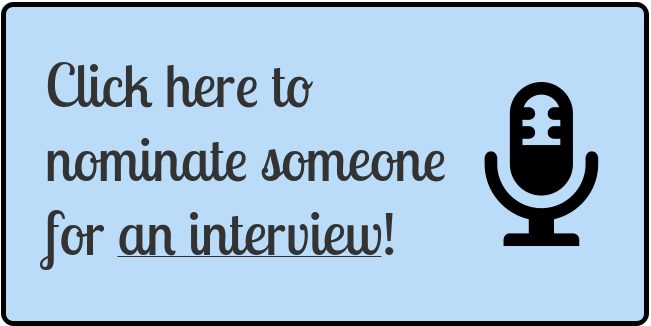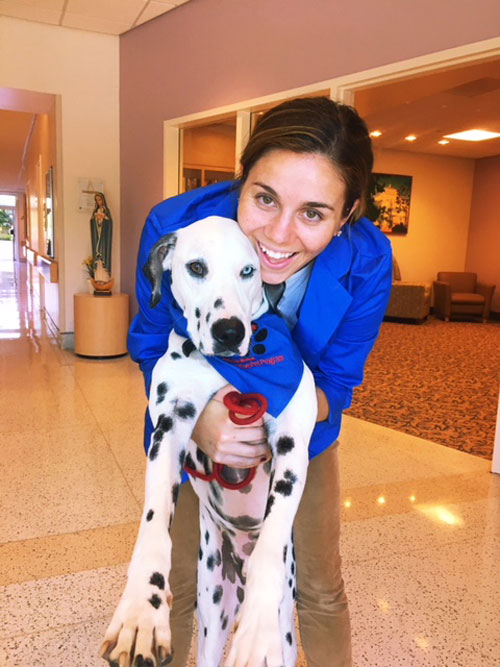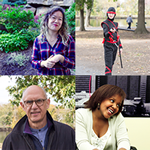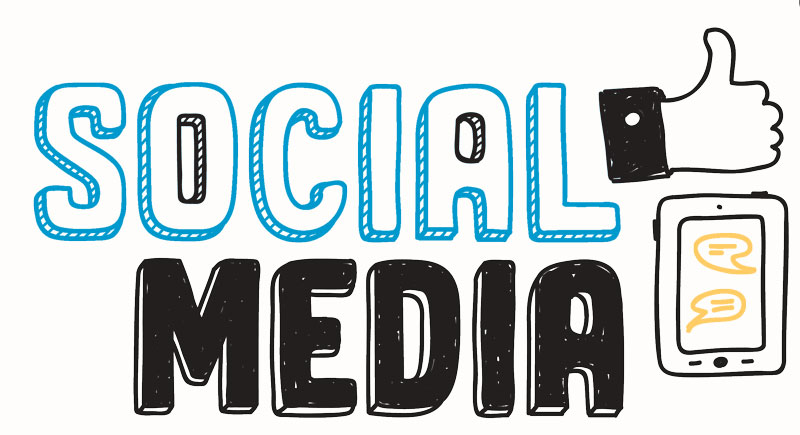Faces Behind the Screen: Charlie
Quick Links
<< Return to all “Faces Behind the Screen” stories
Charlie isn’t your average Dalmatian.
He’s a therapy dog, an actor, a vegan food critic, a model, and a social media influencer (follow him on Instagram @DeafDal).
Charlie is also deaf and has been since birth, which among Dalmatians is very common.
When Colleen found Charlie, he was in line to be put down. No one knew that he was deaf, but luckily, Colleen did.
Having never owned a deaf dog before, Colleen adopted Charlie. Together they learned ASL and began conquering the world.
Do you know anything about his past life before you adopted him?
-
- I do. I got him from the Animal Care Center of NY (ACC). I found him on Urgent Death Row Dogs, the website. He actually came from a pet store, which means he was a puppy mill dog.
He had four owners before me. No one knew he was deaf because, on his list, it said that he didn’t listen.
[His owners] wanted to euthanize him, but the shelter put him up for adoption, and that’s how I found him on the Urgent Death Row Dogs.Are deaf Dalmatians common?
-
- My biggest issue with the Dalmatian community and other breeds is that breeders actually put down deaf puppies. Not all the time, they changed the laws. But for a very long time in the Dalmatian community, it was required for breeders to put down the deaf puppies, not to just have them fixed, but to eradicate it from the breed.
That’s recently changed.
Part of why I’m doing this now is to bring awareness because he did come from a puppy mill. A breeder would be a better situation for a puppy, but he was born into a puppy mill. He wasn’t euthanized because the puppy mill people didn’t know what they were doing.
That’s a big issue in the dog world, especially in Dalmatians. They were so overbred, especially after 101 Dalmatians came out, and more and more were born deaf, and they would just kill the deaf puppies and adopt out the hearing ones.
That has really changed. For now, it’s not a requirement to put down deaf puppies. So I’ve actually adopted out so many of them. I reach out to other breeders that are prone to it, and I get them adopted right away on social media.
It’s still prevalent. It still happens. It’s not like it has gone away. It actually is something that’s very common. The breeders are trying to show that they don’t have any of them, so they euthanize them or get rid of them right away.
It’s really bad. It still happens, but it’s getting better.
When you adopted Charlie, did you know that he was deaf?
-
- Well, I’ve worked with dogs for a long time. I’ve never had a deaf one. But going into this shelter, I just had this feeling that, and I know it sounds super kooky, but deafness is prone to Dalmatians. So the first thing I did was test and see if he can hear because that’s one of the main reasons why a dog like that, a puppy, would end up in a shelter. Not because he’s terrible but because he can’t hear anything.
So I did a few tests and got a whistle, and he didn’t hear anything.
I was planning on pulling him and taking him to a rescue, but I changed my mind. We had this weird moment. I taught him “come to me” in signs, and every time he saw me do it, it was like this light bulb went off in his head and he got overly excited. He would sprint to me and knock me over.
It was almost like he was like, “Oh, someone can talk to me, I get this. I finally have someone that understands me!”
He was just so happy and I had to take him. I’ve had so many dogs in my life and that was the first time I’d ever had that experience with a dog, for the first time meeting them.
How did you teach him sign language?
-
- I don’t find it to be difficult. I never had any deaf friends growing up. I didn’t know ASL. The night I went home when I decided to get him, I spent all night up learning ASL, basic commands.
I learned with him. I would look up what no biting was because he was a biter. So I would teach him “no biting.”
It’s the same as a hearing dog. But I see more pros to it than cons. I’ve trained many hearing dogs and deaf ones now. And I prefer working with deaf ones because they’re more attentive.
If someone else is speaking ASL, Charlie goes up to them because there are certain words that he can pick out of that sentence.
My favorite sign that he knows is “I love you.” And he thinks that means “touch.” So he’ll go up and touch your hand when you’re doing the sign “I love you.” It’s just heartwarming.
Do you think it’s better to have a deaf dog?
-
- I definitely think that Charlie has changed a lot of misconceptions about deafness for me and for his followers. I get a lot of DMs from people who are like, “I would never get a deaf dog, but then I started following you guys and seeing how great he is, I decided to get one.”
It’s so heartwarming because I am very honest with people. I go over the pros and cons of owning one. I lived in New York City with him where there’s construction and loud noises everywhere. I could walk him through Times Square and he didn’t care about people being around. He doesn’t care about anything. There are so many pros to it.
The biggest con is when he runs away, he can’t hear me calling him. He thinks that maybe I’m far away and I’m not. So I bought him a vibration collar, and that means stop and look around for me.
It’s those little things that we wouldn’t have thought of before but now are great.
How do you sign Charlie?
- I put my hand in a fist as an A, because I originally named him Apollo. Then I shape my hands like how you do with signing “ASL,” but he also goes by “jazz hands.” So if you see him on that street, just do jazz hands to him and then he’ll come up to you.
What do you think are common misconceptions that people have about deaf dogs
-
- That they’re dumb. That’s what I hear all the time, that they’re dumb. And then I will have the debate with them. I bet my deaf dog will come to me faster than your hearing dog will. I won’t say a word. And he does, every time, because Charlie looks for me every 30 seconds, while everyone else’s dog in a dog park won’t listen to their owners.
Charlie actually listens to me. He comes to me. He knows more commands than hearing dogs.
I think there’s a lot of misconceptions around [deaf dogs]. There are so many things that he’s better at than other dogs that make me want another deaf one.
He’s a therapy dog, so I take him to hospitals. The beeping noises and those things that are in hospitals that can be scary, he doesn’t have an issue with that. And people connect with him on a different level than they would a regular dog because he has a disability that he’s overcome.
He also does TV commercials. He loves it. He eats it up.
When the cameramen are there, all I need to do is tell Charlie, look at me. I stand behind the camera, and they get more shots from him than they would a hearing dog because he’s so focused on me. Whatever line they need him to look at, he’ll just sit there and stare at me for two hours. He’s a little bit of a creepy dog.
But he’s inspired me. He literally has changed my outlook on so many things with dogs and with disabilities. I was horrified bringing home because I didn’t know ASL. But he’s changed my perception about that, not only changed it, made me see it as more of a pro than a con.
What are some of Charlie’s favorite activities?
-
- Food. He’ll do anything for food. He also loves the beach. We go out to Malibu and that’s his favorite place in the world.
But oh, he loves working on set. That is his all-time favorite thing to do because it involves treats and mom, and he loves learning new things. So as long as those two things are there, he’s happy. So every time we’re on set, he’s happy to be the star of the show. He’s just excited to be there.
He’s a very strange dog. If you meet him, you’ll understand.
How did Charlie get involved in therapy work?
-
- When I was a kid, I used to volunteer and help dogs become therapy dogs. I’ve always wanted a dog that had the right temperament to do that. Dalmatians are not one of those dogs to be good at it, but Charlie’s temperament is different — he loves people, and he’s so kind. Whenever there’s someone with a disability, he just connects to them.
So I thought it would be a good job for him to do and give back.
It’s something that we like to do together. Just seeing the people, that makes it worthwhile to drive out there and go there for a few hours every other week.
What would you say is Charlie’s proudest moment?
-
- When he understands a new trick. That is his favorite thing to do. He’s most happy when it finally clicks to him what I’m trying to say and what he’s doing. The correlation of that, when he get that thumbs up, that’s his proudest moment. And he’s a show-off, so he likes that stuff.
My proudest moment with him was in New York. I was running with him and there was a woman in a wheelchair. Charlie stopped me and pulled me, which he doesn’t pull, but he pulled me over to this woman, she was autistic and didn’t really speak.
Charlie just put his head in her lap and she smiled. And the parents start crying because she hadn’t smiled in two weeks. And she started petting him and was laughing.
I’d never expected that of a dog. And it was just really cute.
He’s great, the best dog ever.
What advice do you have for people who are also deaf dog owners?
-
- The biggest piece of advice is take signing slowly.
They are different from other dogs, so my biggest hint that I tell people when training is that when they’re sleeping, you never wake them up by touching them. You either turn on the light or if they’re on the couch, you push the couch next to them so they feel the vibration of that or their dog bed.
You also want to positively reinforce touching their back, their bottom, and their thigh. I’ll poke Charlie in the thigh, and he’ll turn around really quickly because deaf dogs originally are scared of that since they can’t see it. Then I reward him with a treat for turning around and coming to me. I’ll do it again when he doesn’t pay attention.
It slowly evolves to where now, when I can correct him from the back it’s not a negative thing. It’s not anything that frightens him.
Deaf dogs are known for being more frightened because of the way that people treat them. It has nothing to do with them. It’s how people handle them and how they train them.
Teaching them “come” is really important, especially if you go to the dog park. I do recommend a vibration collar. There are vibration-only collars, and you train them with that on a leash.
What’s a fun fact about Charlie that most people don’t know?
-
- Banana is his favorite food. If there is a steak and a banana, he will pick the banana.
He’s actually allergic to most meat, so he is primarily vegetarian. The only type of meat I can give him is duck kibble for one meal and egg supplements.
That happens when they’re inbred so much, and Dalmatians are prone to all those health problems.
Can you tell us more about Pets On Q?
-
- It’s all because of Charlie. It’s all his fault.
I did dog training and handling before I got him. I would work on sets and do handling.
When Charlie started getting a social media following, I saw other people being taken advantage of. So as a side job, I worked with animal influencers managing them and helping them with paid promotions, merchandise, and licensing.
[Eventually] it grew to the point where I had to quit my other job and do this full-time.I work with animals full time because Charlie started booking gigs and doing New York Fashion Week, and other influencers were like, “Hey, how do I get into that?”
That’s what triggered the idea. Now I manage social media influencers, and my goal is to promote adoption and raise awareness for disabled animals.
But it was Charlie’s fault. If I didn’t save Charlie from the shelter, I wouldn’t have quit a job I didn’t like to do my dream job.
Where can we see Charlie?
-
- He just did a TV show on go90 called
-
- . They did a vegan dog food and he was the celebrity guest judge.
And then we just did the American Rescue Dog Show, which wasn’t work, but it was fun. It’s going to be on the Hallmark Channel on February 19.
Every year it gets bigger and bigger, but it’s really just fun. It’s way more fun for me and him, just go to work and be paid to work with your dog.
He has a great time doing it.

Faces Behind the Screen is a storytelling project focusing on members of the Deaf and hard of hearing community.




